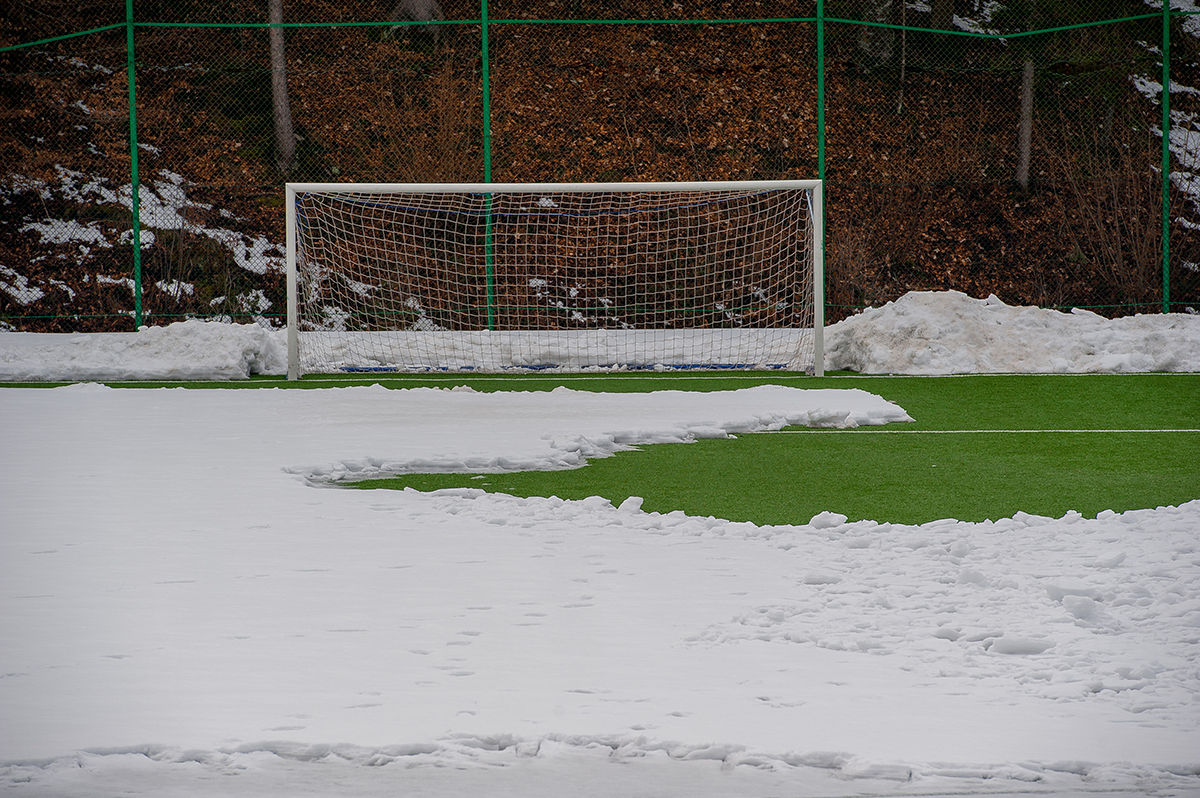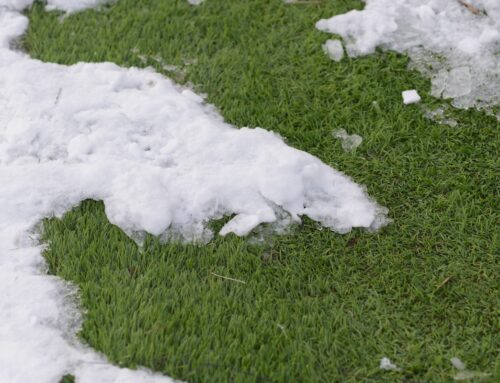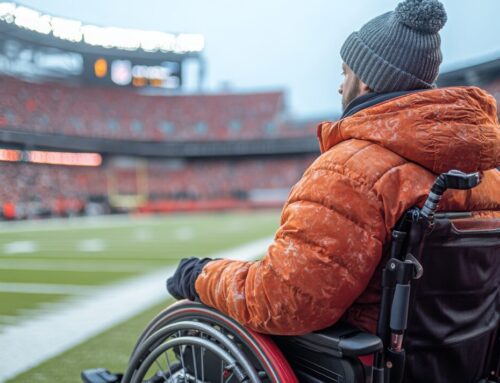Last Updated on December 26, 2022 by ReTurf
Winter can be a dreaded time for homeowners. Winterizing sprinkler systems, worrying about freezing water pipes—not to mention raking up all the cold, wet leaves left behind from Fall.
And, of course, watching the grass you spent so much time and money on during the summer slowly fade into a dull, lifeless brown. If that color were a crayon, it would probably be named something like “Dreary Front Lawn” or “January Brown.”
Old Man Winter and Mother Nature team up around this time every year to present homeowners with a different set of challenges. If your lawn is artificial grass, however, winter weather should be a bit less concerning for you. Assuming your turf is made of high-quality materials and was professionally installed, it should hold up well against the elements.
That’s correct—snowfall accumulation, freezing rain, and other wintry precipitation will generally not directly damage a synthetic turf lawn the way it can damage a natural grass lawn. The fibers used in high-grade artificial turf are designed to hold up against inclement weather, extreme temperature changes, and regular wear and tear over a long period of time.
Q: Will snow cause damage to artificial grass?
A: Generally, the answer is no. Just as with a regular grass lawn, there are some precautions you should take, but generally speaking, it’s safe to leave things be when winter is in full swing and the ground is frozen.
In theory, all artificial turf should be able to withstand winter weather. After all, it’s made to be outdoors year-round—if it wasn’t, it’d sure be inconvenient to roll up and move the lawn inside with the patio furniture whenever it starts to get cold!
However, realistically speaking, the performance and “cold resistance” of your artificial grass lawn can rely on the quality of the specific turf products used. Different artificial grass products can be made of different materials. Therefore, it’s important to make sure you purchase high-quality turf if you plan on using it in an area with harsh winter weather. Professional-grade used artificial turf from stadiums, athletic fields, or other sports facilities can be a great option, as this turf is extremely durable and designed to withstand extremely hard usage and harsh winter weather.

Q: Will turf blades flattened by snow “bounce back” to normal after the snow melts?
A: Contrary to regular grass, which can die off under harsh conditions such as extreme cold or heavy snowfall, artificial turf won’t be harmed by typical winter weather. Synthetic turf fibers (i.e. fake grass blades) may become compressed and flat after a particularly heavy snowfall, but in many cases, it should naturally rebound with time as temperatures warm up again.
Q: Is there a way to speed up the process?
A: To speed up this process and/or help lift the blades of your turf after a snowfall you can use a turf-safe brush with soft bristles to gently “brush up” the surface of your turf. Keep in mind that using brushes or rakes with stiff/metal tines can cause damage to flat synthetic grass blades, so make sure you use a brush specifically designed for artificial turf.
Note: if you’re speeding up the process because you’re worried about a heavy snowfall causing damage, don’t worry too much. High-quality turf should rebound without the need for a brush—it just takes time! That said, feel free to simply use a turf-safe rake or broom to brush off excess snow.
You may also consider using a snow blower. If you do opt to use one, check out this article for some helpful tips.

Q: Can you walk on frozen artificial turf?
A: Generally, you should avoid walking on artificial turf if the blades are frozen as this could result in damage. Stiff, frozen fake grass blades may break in freezing cold weather, so it’s best to avoid walking around on them if possible. Instead, let any snow and frost melt away and allow it to naturally drain through your turf’s drainage system.
One way that natural grass lawns and synthetic turf lawns are alike is that when they’re icy, they can both get very slippery. Exercise caution and common sense when it comes to icy conditions on your artificial grass lawn.
Summary
In short, snow can cause minimal damage to artificial turf when the blades of grass become frozen and the fibers are no longer as flexible. Real grass does the same thing when it’s stepped on while frozen, but it has the potential to grow back (eventually).
To avoid this, it’s best to purchase high-quality turf from a reputable artificial grass supplier and let any snow or frost melt away naturally before walking on it. Cheap, low-quality fake grass from big box stores and other sources may not perform as well (or well at all) in harsh winter weather and should be avoided if you live in an area with snowy or icy winters.
Final Thoughts
Otherwise, when it comes to winter weather and artificial grass, there really isn’t much cause for concern—so don’t lose sleep over your lawn this winter!
Professional-grade artificial turf can help you rest easier knowing your lawn will stay looking beautiful despite whatever Mother Nature throws at it. When temperatures fall (and snow follows suit) you can rest assured knowing that your lawn will remain healthy with minimal effort on your part.
Synthetic grass is one case where it’s perfectly fine to fool Mother Nature. Enjoying a verdant, lush lawn (and peace of mind) during colder months is one of the many benefits of having an artificial turf lawn!



